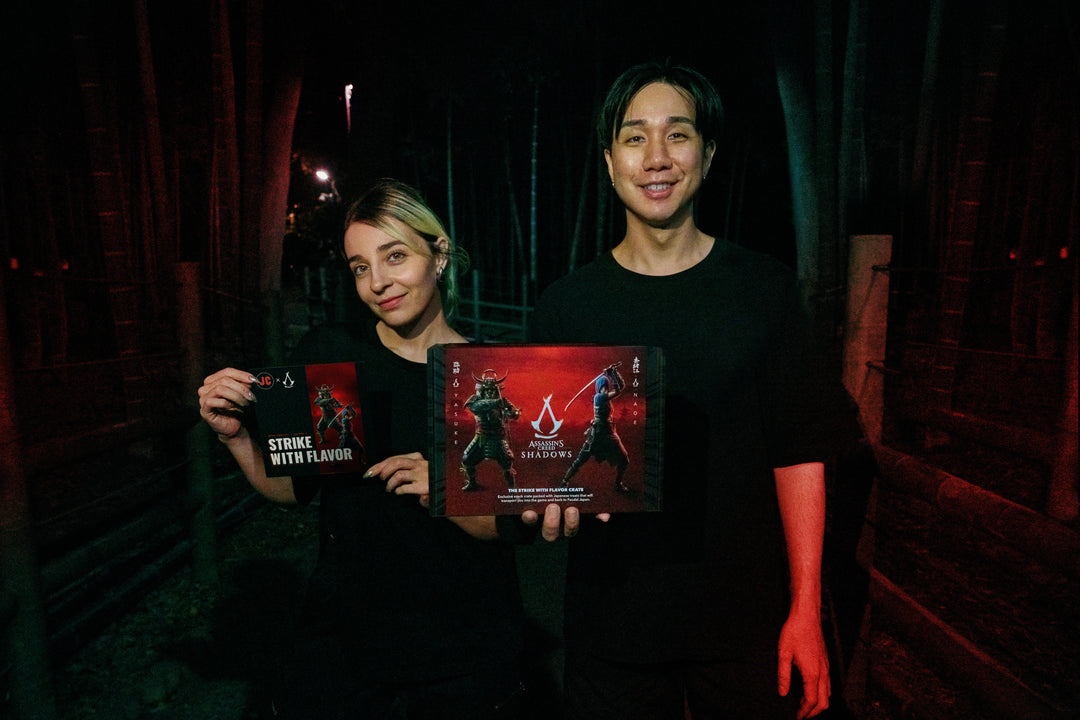Weeb vs Otaku: What's The Difference?
Weeb and Otaku are some of the words that you often hear when talking about anime. Manga and anime, two of the most well-known arts in the world, are possibly Japan's biggest cultural exports. Although Japanese anime culture has recently gained more recognition abroad, several shops, restaurants, and clothing lines in Japan have been influenced by the country's most popular comic books and anime. Due to this popularity, anime fans have been divided into two: Weeb and Otaku. So read on and discover whether you are an Otaku or a Weeb.
What is Anime?
The word "anime," which means cartoon or animation in Japanese, refers to all cartoons, regardless of country. On the other hand, anime is a term used outside of Japan to describe Japanese-only animated movies that are notable for their vivid animation, animated characters, and enticing themes like sci-fi, romance, and supernatural forces.
The art associated with anime is distinctive and simple to recognize. You are undoubtedly familiar with other features like big eyes, untamable hair, long arms and legs, and other attributes. The characters may express their feelings more freely because of this exaggerated style, which is common in anime. The emotive ambiance of anime is enhanced by technical animation techniques such as dramatic closeups and zooms, vibrant lighting, and vibrant colors. Beyond its distinctive aesthetic, anime has won over viewers' hearts with its complex characters and gripping storylines. There is probably an anime show or movie out there for you, no matter what your interests are or what genres you enjoy.
History of Anime

Anime has been in existence for approximately 100 years. Many artists have pushed the envelope using anime as their chosen storytelling form. Anime dates back to 1907 in history. Several Japanese artists of the period were influenced by Western animation and made the decision to develop unique national content for Japan. Due to the high cost of the materials and Japan's repeated economic problems brought on by natural catastrophes and then World War 2, this was particularly challenging.
The first animated movie was released in Japan in the 1940s with official support. Japanese comic books, or manga, were handed to the populace after the war. They provided Japanese people with a diversion from the challenging post-war realities. Anime films are now available to a wide range of viewers, and the genre has grown to become one of Japan's most important exports.
What is Otaku?

There are those who are obsessed with manga, J-pop, Japanese comics, video games, and other Japanese products to the point of being frantic. This person with obsessive interests in anime, manga, and video games is known as an otaku. The word Otaku can be used as an adjective or a noun. Otakus have strong passions for their pastimes, but they also have interests in other things. Some would argue that being an otaku can have negative connotations because some people think they are addicted to their hobby, while others may find them socially awkward because they prefer to stay inside all day watching their favorite shows instead of going out.
Moreover, depending on who is observing, this can be viewed as both a positive and a terrible thing. One can say an otaku is someone who is obsessed with something or someone; in this case, they are obsessed with Japanese animation. However, some people may not view these activities as obsessive but rather as original ways of celebrating the show you love! There is also a Japanese otaku who typically spend their time collecting anime merchandise, creating fan art, making videos, taking pictures at conventions, and cosplaying (dressing up as characters from their favorite shows). Otakus can relate to a variety of things depending on where they reside; hence there is no universal description of what they are.
What is an Otaku Culture?

A Japanese subculture called otaku emerged around 1980. One of Japan's largest and most diversified subcultures is this one. Otaku, persons with obsessive interests, especially in anime and manga, anime characters, Japanese cartoons, and Japanese fictional characters, are those who participate in this culture. Otaku cultural phenomena comes in a variety of forms that go beyond only those who are fans of idols, anime, manga, and video games. The suffix "Otaku" can be used to identify any subculture; for example, someone who enjoys manga might be categorized as a Manga Otaku. Some groups even divide otaku into other categories like anime, manga, idol, electronics, or automobile otaku.
Furthermore, popular anime series like One Piece, Dragon Ball, Naruto, and Bleach helped otaku culture, which had previously been confined to the west, to become a global phenomenon. In fact, millions of fans worldwide who are interested in various facets of Japanese pop culture, such as anime, manga, idols, etc., attend thousands of anime conventions each year.
How to be an Otaku?

1. Watching various Anime Shows
The most crucial aspect of being an Otaku is obviously becoming familiar with anime. Through reading anime magazines and websites, one can learn about the most well-known series. Watching the anime comes after choosing your favorite titles from anime blogs or mangas. Generally, watching more anime and learning more about each series is best. Make sure to read the manga as well because many people enjoy discussing the differences between a show's anime and manga versions. Your preference for an anime will never be fixed; there will always be one that you prefer; even though you've seen it numerous times, your favorite anime is the one you always want to see. However, you'll soon discover another that is either equally awesome or even better.
2. Cosplaying
Cosplay, which is a mashup of the words "costume" and "play," essentially refers to dressing up. Conventions are typically where cosplay is done. Costumes can be constructed by hand or purchased online. To cosplay successfully, pick a character whose height, weight, build, and personality are comparable to your own, collect as many high-quality reference photos as you can, and begin creating your costume as soon as you can before going to anime conventions. It's also common for anime enthusiasts or female otaku to obtain body piercings, wear brightly colored clothing, and have their hair dyed in unique or extremely vivid colors. Everything that showcases your uniqueness is beneficial. Some people may like to wear colored contact lenses to alter the color of their eyes.
3. Understanding Japanese Anime Culture
Being an anime fan is a lot of fun since it involves learning about Japanese culture. Your experience watching anime is substantially improved by understanding it. Because dubs, at least in America, frequently alter the original dialog too much, anime enthusiasts typically prefer anime in the original Japanese with subtitles. Knowing the Japanese language can also help you recognize whether a character has a name that has a Japanese connotation, which may provide insight into that character's characteristics.
What is Weeb?

"Weeb" or "weeaboo" is slang for a non-Japanese person who is fascinated by Japanese culture and frequently disregards their own identities, whether they be racial, cultural, or otherwise. Weeb commonly make offensive assumptions about Japanese society based on the themes of their favorite anime. In addition to being interested in and devoted to the culture, these individuals would begin speaking or utilizing Japanese slang in their native tongue. Everyone who is or has been labeled as such feels uncomfortable with the label because it has been used in a ridiculing manner or negative connotation since the term's origin.
However, there is no concrete evidence that weeb is a disparaging or racial epithet, despite the fact that the term might be used negatively. Weeb is more akin to the term "Wapanese," which refers to someone who is a "wannabe Japanese" or a "white Japanese." As a result, the term itself does not discriminate against Japanese people. Nonetheless, it could be perceived as "racist" or disrespectful by non-Japanese individuals who are enamored with Japanese culture. On the other hand, some frequently come across people who are extremely chuffed to be weebs. Despite the term's generally unfavorable connotations, some people view "weeaboo" as a compliment. Even though some people think it is self-deprecating, they utilize the term to define their position inside a society where they feel like they belong.
History of Weeb
After being introduced to Western world culture in the 1900s, anime and manga series started to increase rapidly. The Cartoon/Fantasy Organization was the first fan organization, and it was founded in 1977 in Los Angeles. After Sailor Moon was created in the 1900s, the culture saw a boom that attracted young adults. It attracted people as young as grade school after being translated into English in 1995 to make it more widely available. In contrast to the conventional masculine, many of these were female. The anime and manga cultures had significantly evolved and flourished in just a few short months.
Cosplay originally appeared in the US as fans started bringing comics and anime to conventions. After that, anime was formally endorsed by the US. This made it possible to translate into English any anime or manga that had already been published in Japan, distribute it in the US, and have it shown on US television. After the anime boom or initial growth in the 1990s, many people who love anime became obsessed with Japanese culture or became fans of the medium in the United States and called themselves weebs.
Difference between Otaku and Weeb
If you are one of these or are interested in Japanese culture, you have undoubtedly heard of at least one of these anime fan slang terms. Given how closely related the terms are, there is a propensity for their definitions to converge. But there is one key difference between Weebs and Otakus. Although Weeb is believed to have an "unhealthy preoccupation," they share Otaku's passion for Japanese popular culture.
In addition, this obsession frequently shows a lack of understanding or respect for the Japanese people and culture, to whom they are so closely linked. The short form of weeaboo, "weeb," is just as common as its longer counterpart. The main takeaway from the Otaku vs. Weeabo debate is that labels like "weeaboo" or "weeb" are frequently used in severely disparaging ways. On the other hand, a person who is passionate about Japanese culture, including video games, manga, anime, and idols, is referred to as an "otaku." You could be wondering whether you are an otaku or a weeb now that you are aware of the differences.
If you can relate to any of the following, you might be happy to call yourself an otaku:
-
You have a huge collection of plush anime.
-
You enjoy cosplaying
-
You enjoy both anime from Japan and the West.
-
You watch both dubbed or subtitled anime
-
You have posters of anime all around your room.
-
Beyond anime, you're not very interested in other facets of Japanese culture.
If you're passionate about every aspect of Japanese culture, whether or not it includes anime, you might not be the best candidate for the label of otaku. Those who indulge in one or more of the following behaviors are known as weebs:
-
You enjoy tasting Japanese cuisine
-
You purchase a monthly package of Japanese snacks.
-
Your studies of Japanese
-
You won't watch any anime that isn't Japanese.
-
You never stop reading manga
-
You wish to travel to Japan
How to Celebrate being an Otaku or a Weeb?
It's nice to be an otaku or weeb, but how can one use these interests? Remember, is all about developing your inner anime enthusiast. Go straight forward in Akihabara if you've dipped your toes in the water and are ready to live your finest weeb or otaku life. The town of Akihabara, which has recently seen an increase in foreign visitors, is regarded as the Otaku Mecca. At Akihabara, there are many pop culture stores that offer a variety of Otaku goods, including manga, light novels, character model figurines, and other rare items. Together with Akihabara, Nakano has recently gained recognition as an Otaku neighborhood in Tokyo.
Moreover, if you only enjoy anime, think about reading manga to broaden your interests. In fact, several well-known anime programs, like Death Note, Demon slayer, Naruto, Hunter x Hunter, and One Piece, are adaptations of the popular manga series. It may take some time to get acclimated to the format if you have never read manga before. It's a terrific approach to broadening your interest in reading up on manga. The majority of comics actually expand on the plots of their anime adaptations, which makes them much more captivating!
It's Japan Crate Time!
Experience the excitement of a Japanese gachapon machine and add some Japanese cuteness to your daily routine with Japan Crate! 13 distinct Japanese gacha toys are included in the Sugoi Mart Gachapon Lucky Bag. In fact, Gacha Gacha keeps the gachapon ethos by making this lucky bag delivered to your home full of excitement and expectation. Join Japan Crate today for more entertainment, mystery, and Gacha Gacha craziness!
Supplement these fun goodies with sweet and savory snacks from Japan with a monthly Japan Crate subscription. Click this link to subscribe now! Who can say what surprises might be concealed inside?
Author Bio







Leave a comment